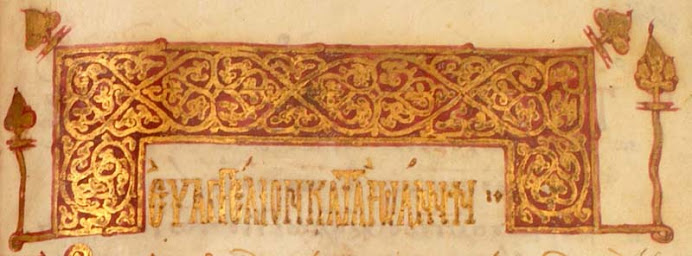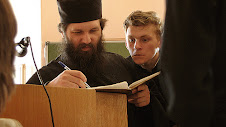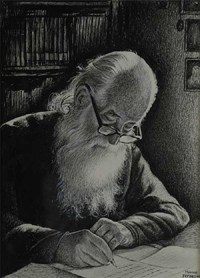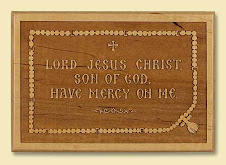
I. Nicea I (325)
Formulated the first part of the Creed, defining the divinity of the Son of God.
Summoned by Emperor Constantine the Great in response to the Arian controversy. Proclaimed that the Son is “of one essence” with the Father; that is, the Son is consubstantial (homoousios), with the Father. This council condemned Arianism. Determined the Paschalion (system for dating Pascha).
II. Constantinople I (381)
Formulated the second part of the Creed, defining the divinity of the Holy Spirit.
Summoned by Emperor Theodosius I to unite the Eastern Church at the end of the lengthy Arian controversy on the basis of the Nicene faith. Proclaimed the full divinity of the Holy Spirit. The restatement of the Nicene Creed attributed to this council declares the Holy Spirit to be “Lord the Giver of Life, Who proceedeth from the Father, Who with the Father and Son together is worshipped and glorified.”
III. Ephesus (431)
Defined Christ as the Incarnate Word of God and Mary as Theotokos.
Summoned by Emperor Theodosius II in the hope of settling the Nestorian controversy. Proclaimed that the Virgin Mary is Theotokos, that is, the one who gave birth to God. This council condemned Nestorius, bishop of Constantinople.
IV. Chalcedon (451)
Defined Christ as Perfect God and Perfect Man in One Person.
Convoked by Emperor Marcian to deal with the Eutychian heresy. Proclaimed that Jesus Christ is fully divine and fully human, “like us in everything, except for sin.” He is acknowledged “in two natures: without confusion, without change, without division, without separation; the difference of the natures being in no way destroyed because of the union, but rather the property of each nature being preserved, and both concurring into one Person and one hypostasis.” This is known as the hypostatic union (communicatio idiomatum). This definition opposes the Monophysite position of Eutyches. This led to the schism of those churches now known as “Oriental Orthodox,” i.e., the Armenian, Coptic, Ethiopian, and Syrian Churches, who saw this definition as incompatible with the doctrine and language of St. Cyril of Alexandria.
V. Constantinople II (553)
Reconfirmed the doctrines of the Trinity and of Christ.
Convoked by Emperor Justinian to try to make a Christological settlement that would reconcile the several eastern churches that refused to accept the Council of Chalcedon, Defined the three hypostases (“persons”) of the Trinity to be consubstantial, and the full hypostatic unity of Christ, born eternally of the Father and in time, as man, of the Theotokos. It rejected every doctrine that makes of Christ two hypostases (two persons). It affirmed the full Orthodoxy of the Christological teachings of St. Cyril of Alexandria and condemned his opponents. It condemned the Three Chapters (neo-Nestorian texts by three Syrian theologians: Theodore of Mopsuestia, Theodoret of Cyrrhus, and Ibas of Edssa, who were named as heretics) as well as Origen, among others.
VI. Constantinople III (680-681)
Affirmed the true humanity of Christ by insisting upon the reality of His human will and action.
Convoked at the demand of the Emperor Constantine IV (Pogonatus) to settle the prolonged Monothelite controversy. Proclaimed that Jesus Christ has two wills and two energies or operations, one divine, the other human, inseparably united in the one person. The council condemned monotheletism and monoenergism. It condemned Pope Honorius I (625-638) as a heretic on account of explicit monothelite statements sent to Patriarch Sergius I (610-638) of Constantinople, who was also condemned, together with four other monothelite patriarchs, including Cyrus (630-643) of Alexandria. (The Synod in Trullo or Quinisext Council (692) is counted as part of the sixth Ecumenical Council, because it passed disciplinary canons.)
VII. Nicea II (787)
Affirmed the propriety of icons as genuine expressions of the Christian Faith.
Convoked by Empress Irene at the instigation of Patriarch Tarasius of Constantinople in order to end the Iconoclast Controversy. Proclaimed that the sacred images of Christ, the Theotokos, the angels and saints are to be used in churches and homes and in public. It approves their veneration. Those who venerate icons venerate the person depicted, not the material of the icon. This council marks the end of the first period of imperially promoted iconoclasm.
Formulated the first part of the Creed, defining the divinity of the Son of God.
Summoned by Emperor Constantine the Great in response to the Arian controversy. Proclaimed that the Son is “of one essence” with the Father; that is, the Son is consubstantial (homoousios), with the Father. This council condemned Arianism. Determined the Paschalion (system for dating Pascha).
II. Constantinople I (381)
Formulated the second part of the Creed, defining the divinity of the Holy Spirit.
Summoned by Emperor Theodosius I to unite the Eastern Church at the end of the lengthy Arian controversy on the basis of the Nicene faith. Proclaimed the full divinity of the Holy Spirit. The restatement of the Nicene Creed attributed to this council declares the Holy Spirit to be “Lord the Giver of Life, Who proceedeth from the Father, Who with the Father and Son together is worshipped and glorified.”
III. Ephesus (431)
Defined Christ as the Incarnate Word of God and Mary as Theotokos.
Summoned by Emperor Theodosius II in the hope of settling the Nestorian controversy. Proclaimed that the Virgin Mary is Theotokos, that is, the one who gave birth to God. This council condemned Nestorius, bishop of Constantinople.
IV. Chalcedon (451)
Defined Christ as Perfect God and Perfect Man in One Person.
Convoked by Emperor Marcian to deal with the Eutychian heresy. Proclaimed that Jesus Christ is fully divine and fully human, “like us in everything, except for sin.” He is acknowledged “in two natures: without confusion, without change, without division, without separation; the difference of the natures being in no way destroyed because of the union, but rather the property of each nature being preserved, and both concurring into one Person and one hypostasis.” This is known as the hypostatic union (communicatio idiomatum). This definition opposes the Monophysite position of Eutyches. This led to the schism of those churches now known as “Oriental Orthodox,” i.e., the Armenian, Coptic, Ethiopian, and Syrian Churches, who saw this definition as incompatible with the doctrine and language of St. Cyril of Alexandria.
V. Constantinople II (553)
Reconfirmed the doctrines of the Trinity and of Christ.
Convoked by Emperor Justinian to try to make a Christological settlement that would reconcile the several eastern churches that refused to accept the Council of Chalcedon, Defined the three hypostases (“persons”) of the Trinity to be consubstantial, and the full hypostatic unity of Christ, born eternally of the Father and in time, as man, of the Theotokos. It rejected every doctrine that makes of Christ two hypostases (two persons). It affirmed the full Orthodoxy of the Christological teachings of St. Cyril of Alexandria and condemned his opponents. It condemned the Three Chapters (neo-Nestorian texts by three Syrian theologians: Theodore of Mopsuestia, Theodoret of Cyrrhus, and Ibas of Edssa, who were named as heretics) as well as Origen, among others.
VI. Constantinople III (680-681)
Affirmed the true humanity of Christ by insisting upon the reality of His human will and action.
Convoked at the demand of the Emperor Constantine IV (Pogonatus) to settle the prolonged Monothelite controversy. Proclaimed that Jesus Christ has two wills and two energies or operations, one divine, the other human, inseparably united in the one person. The council condemned monotheletism and monoenergism. It condemned Pope Honorius I (625-638) as a heretic on account of explicit monothelite statements sent to Patriarch Sergius I (610-638) of Constantinople, who was also condemned, together with four other monothelite patriarchs, including Cyrus (630-643) of Alexandria. (The Synod in Trullo or Quinisext Council (692) is counted as part of the sixth Ecumenical Council, because it passed disciplinary canons.)
VII. Nicea II (787)
Affirmed the propriety of icons as genuine expressions of the Christian Faith.
Convoked by Empress Irene at the instigation of Patriarch Tarasius of Constantinople in order to end the Iconoclast Controversy. Proclaimed that the sacred images of Christ, the Theotokos, the angels and saints are to be used in churches and homes and in public. It approves their veneration. Those who venerate icons venerate the person depicted, not the material of the icon. This council marks the end of the first period of imperially promoted iconoclasm.









No comments:
Post a Comment